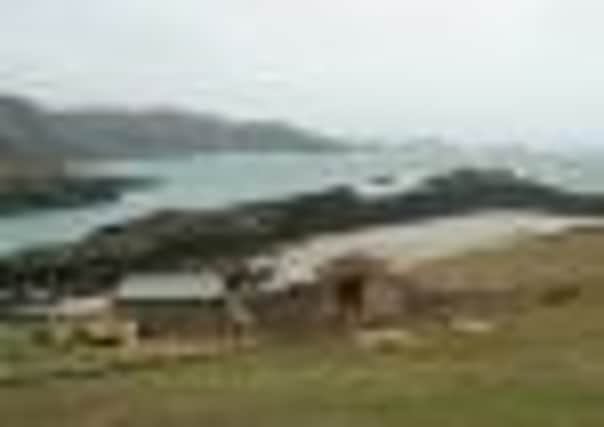The most remote, the most scenic and probably the most expensive toilet ever built in Scotland


The £50,000 loo with a view is made of steel and is expected to take a team of five men six days to build on an island so difficult to reach it took two landing craft several attempts to land the specially designed materials on shore.
Positioned on a hill overlooking a beach, the foundations are seven feet deep to stop it being blown into the Atlantic by regular gale-force winds, while the only prying eyes will be from the seals and otters who live nearby. Following completion this week, intrepid birdwatchers to one of Scotland’s most spectacular wildlife reserves will now no longer have to cross their legs until they reach the mainland.
Advertisement
Hide AdAdvertisement
Hide AdIn the summer, more than 100,000 seabirds, including puffins, guillemots and razorbills, gather on the island to breed. However, the new turf-roofed powder room has been built for the island’s 6,000 human visitors, who descend each summer to see the wildlife.
Although the island has a tiny bothy and toilet with septic tank for volunteers and staff from the Scottish Wildlife Trust (SWT), which manages the island, the facilities could not cope with the annual influx of humans.
Phil Knott, the Handa ranger and reserves assistant for the SWT, said: “The septic tank could not cope with 6,000 visitors per year. Before, if you had to ‘go’ on Handa as a day visitor, you needed to find a quiet corner. This improvement has been needed for a long time.”
Architect David Somerville, who designed the toilet and has been working on the project for the past five years, said: “It was a very challenging project. The winds are so strong on Handa that the building needed to be made with steel to hold it down.
“There’s also no electricity and no water so everything had to be thought through very carefully before we even got to the island.”
The structure is rooted seven feet into the sand, with an eco-friendly composting facility in which sawdust is sprinkled after each use, instead of flushing, meaning it need only be cleared out every two to three years. There is also a small lean-to to provide shelter from any driving storms. Funding for the facility came from the Scottish Government, Highland Council and several private sources.
“There will be no pollution from this toilet, only compost,” said Knott. “It is most definitely eco-facility, with a turf roof and eco-friendly cleaning products. We have tried to blend it into the landscape with the turf roof. And from the door you can see lots of iconic mountains like Suilven, Foinaven and Ben Mor Coigach as well as seals and otters on the nearby beach.”
The red sandstone island and its steep cliffs are now recognised as one of Scotland’s best sanctuaries for a wide range of seabirds.
Advertisement
Hide AdAdvertisement
Hide AdOwned by the Scourie Estate, it is manned in the summer by four long-term volunteers as well as 45 short-term volunteers who come for a week at a time to help maintain the island and carry out bird counts.
However, from September until March the island is completely uninhabited. Every year the SWT advertises for volunteers to spend a week on the island, and this year it has been inundated with applications from all over the world.
“We are turning away applications for the short-term volunteering on a near daily basis,” said Knott. “With the economic crisis, jobs in the environmental sector have been squeezed, and so graduates and those without work in this sector are having to look at gaining experience any way they can, and so its win-win for volunteer and organisation.”
On the island’s busiest days it can receive up to 150 visitors and volunteers look after the birdwatchers who arrive to view, among other things, one of Europe’s biggest colonies of guillemots, as well as red grouse, puffin, Arctic skua, Arctic tern, eider duck and various gulls.
“There are no distractions from civilisation, phone signal is poor and, of course, we do not have a TV,” said Knott. “Many of our volunteers have been visiting Handa for nearly 20 years, coming back year after year to help out.
“To those who know it best and have got to know it intimately, it is one of the most special places in Scotland.”
In the 19th century, Handa was recorded as having a population of around 65 people. The islanders had a parliament, similar to that of St Kilda, which met daily, and a female-centric society where the oldest widow on the island was considered its “Queen”.
But despite a healthy diet of oats, fish and seabirds, the remaining islanders decided to abandon their homes for the mainland in 1848 as a result of the potato famine.